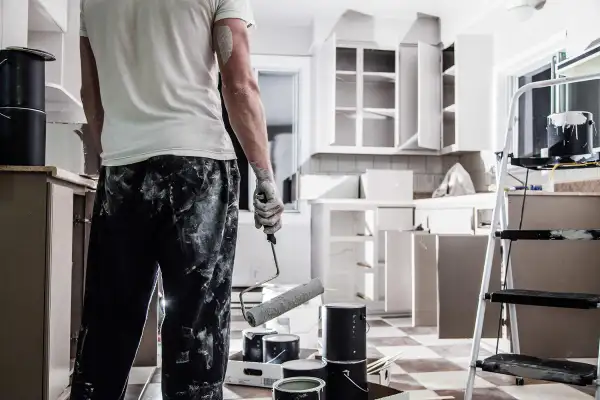5 Things to Know Before You Renovate Your Kitchen

If you sometimes have trouble deciding what to make for dinner, a kitchen renovation can feel paralyzing. But take heart: It doesn’t really matter much which backsplash tiles or faucet you choose. As long as you get the big stuff right, you’ll be thrilled with your new kitchen. These five rules will help you get the best result at the right price.
1. Keep your outlay in sync with your home.
To avoid overimproving, cap your kitchen renovation budget at 15% of your home's value, suggests John Bredemeyer, president of Realcorp, a national appraisal firm based in Omaha. (Check your town assessor's site or a real estate site). For budgeting purposes, figure about 30% on cabinets; 14% on appliances; 10% on countertops; 5% on lighting; 4% on plumbing fixtures; 2% to 3% on paint; 1% to 2% on tiles, and 35% on construction costs, such as windows, flooring, and labor.
For a house worth $250,000, that translates to about $11,000 on cabinets, $5,250 on appliances; $3,750 on countertops, $1,875 on lighting; $1,500 on plumbing fixtures; $1,125 on paint; $750 on tiles; and $12,000 on construction costs.
2. It pays to pay for your design.
There’s no such thing as a free lunch—or a free plan for renovating the place where you prepare lunch. While the designers at home centers, kitchen stores, and cabinet shops won’t charge you a fee, they aren’t working for free. Their paychecks come from the retailer or manufacturers of the products they’re selling, which limits your choices. What’s more, in-store designers, especially those working at home centers, tend to be relatively inexperienced with actual renovation work, says Portland, Ore., kitchen designer Chelly Wentworth.
Since your project will only be as good as its design, skip the freebies and hire a veteran designer without any conflicts of interest. Expect to pay 3 to 10 % of your project costs for design—a fair price for a design that really works.
Read next: 11 Affordable Ways to Upgrade an Outdated Kitchen
3. You can expand the kitchen without busting the budget.
Unless your house was built within the last few decades, your kitchen is almost certainly undersized. If you’re doing a major renovation (in other words, tearing things out and starting over), now is the time to expand the kitchen; here’s how to do it affordably.
- Steal space. By repurposing square footage from an adjacent hallway or a no-longer-needed chimney, closet, or porch, you can expand your kitchen at perhaps half the per-square-foot costs of an addition. Exactly how much you’ll pay depends on the project and location, but you might pay $100 to $300 per square foot for recapturing space vs. $200 to $400 for building new.
- Open the floorplan. Even if you don’t expand the kitchen at all, you can make it feel much bigger by taking down a wall and creating an open floorplan between the kitchen and adjacent dining, family, or living room. In the context of a renovation project, this may cost $1,000 to $6,000, depending on whether the wall is load-bearing or contains major plumbing or electrical lines.
- Bump out. If you need to expand, you may be able to add a two-foot extension along one whole side of the kitchen by hanging it off the house like a bay window rather than putting it on a foundation. That could save you several thousand bucks compared with a full-fledged addition.
4. To cut costs, hold on to what works.
You can slash the price tag for any kitchen renovation by limiting how much of the old kitchen you replace. Keeping original windows can save you $500 to $1,000 per window; keeping the original wood floor hiding underneath all of those layers of linoleum and vinyl could save you $2,000. And simply keeping the plumbing fixtures and appliances in the same locations likely means you can reuse existing plumbing, saving you perhaps $200 to $500.
Read next: 5 Affordable Ways to Upgrade an Outdated Bathroom
5. Stay skin deep if you’re moving anytime soon.
If you expect to put your house on the market within a decade, skip the $60,000 renovation and go for a cosmetic upgrade instead. You can have old cabinets painted for $1,000 to $5,000 or refaced with a new wood veneer and new doors and drawer fronts for some $5,000 to $7,000. A new faucet and fresh cabinet hardware can be yours for under $500, new lighting for $500 to $2,000, depending on how far you take it; even replacing Formica countertops with granite might cost less than $4,000.
